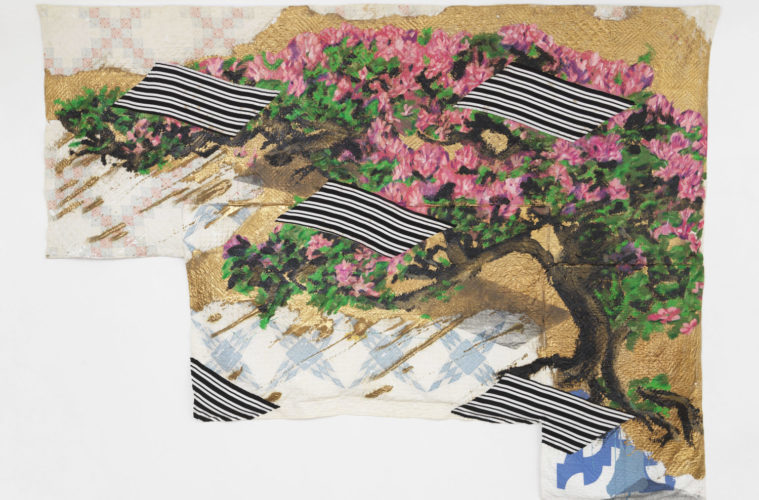In the exhilaratingly original Afrofuturist tapestries in April Bey’s installation Atlantica, The Gilda Region and the history-laden mixed media works in Sanford Biggers’ 12-year survey of his quilt-based Codex series, Codeswitch, what is perhaps the coincidence of both being textile-centric exhibitions offers a perfect way to experience each exhibition and their confluence.
As Bey channels the scale and production quality of art historical palatial wall-hangings to explore a surreal and gentle alternate realm, Biggers gathers vintage (pre-1900), intimately crafted blankets and through collage, paint, shaping and symbolism transforms them into narrations of comfort within trauma.
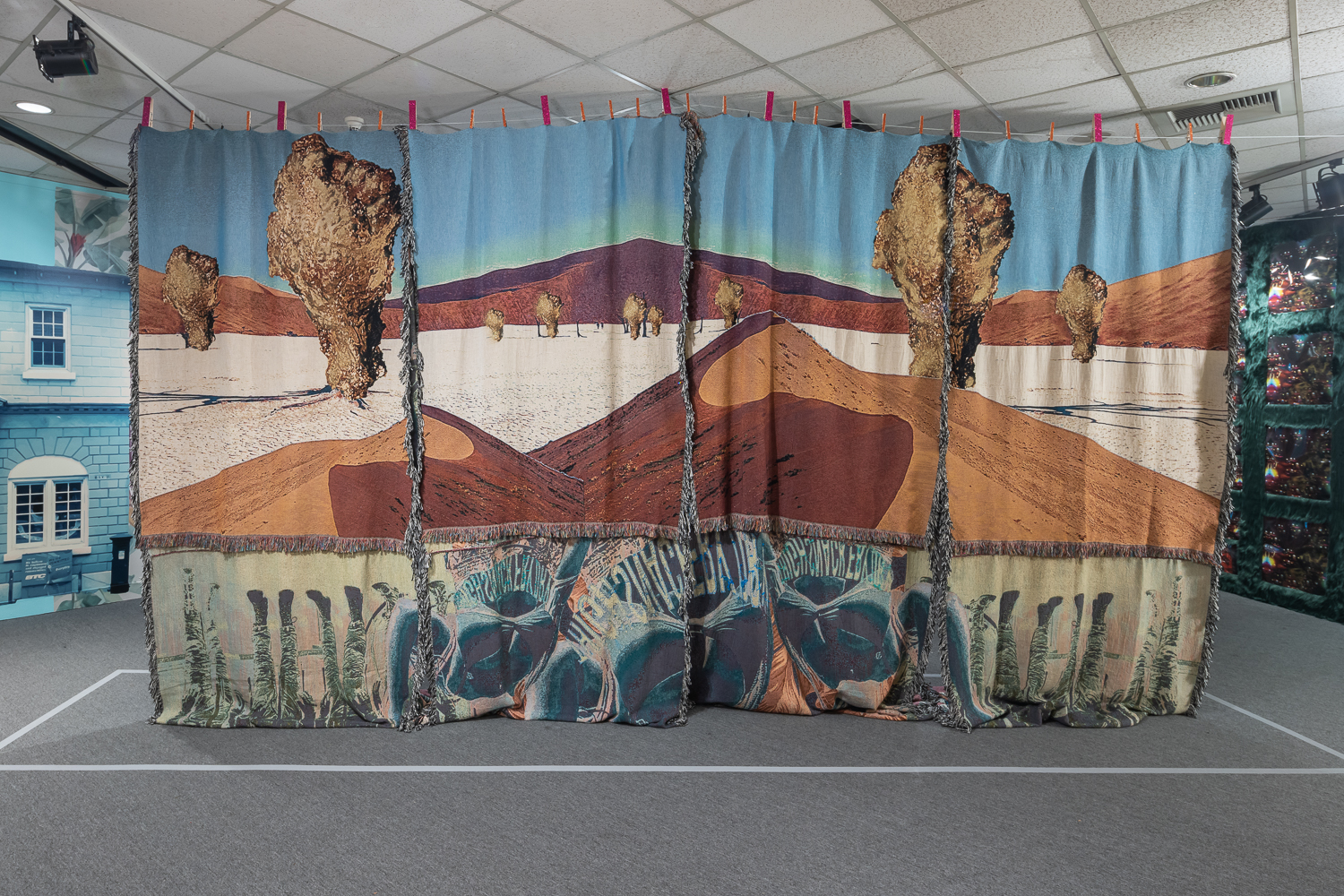
April Bey: Atlantica, The Gilded Region, installation view at CAAM (Photo by Elon Schoenholz)
It’s not clear that these solo presentations were intended to be shown concurrently, but it’s a brilliant happenstance that they have. In both Bey’s and Biggers’ works, viewers see compelling uses of rugged textile as an expressive medium — one capable of evoking the past, present and future all at the same time.
With almost 50 works in wall-hanging, sculpture, video and collage, Biggers introduces a language of modern abstraction, popular culture, sacred geometry, personal narrative, politics, gender and the experiences of Black people in America since 1619. With the initial inspiration coming from the anecdotal stories of quilts being used as signposts along the Underground Railroad routes, Biggers began a still-ongoing project of collecting, reworking and augmenting antique quilts. In the intervening years, the collection and the practice has continued to expand, and its meaning to deepen. Many pieces reference time he spent in Japan (where the Kimono tradition also views textiles and both narrative and sculptural occasions) and were others inspired by his time working in the Bronx, the formal traditions of modernist abstraction and the kaleidoscopic optics of reflectiveness.
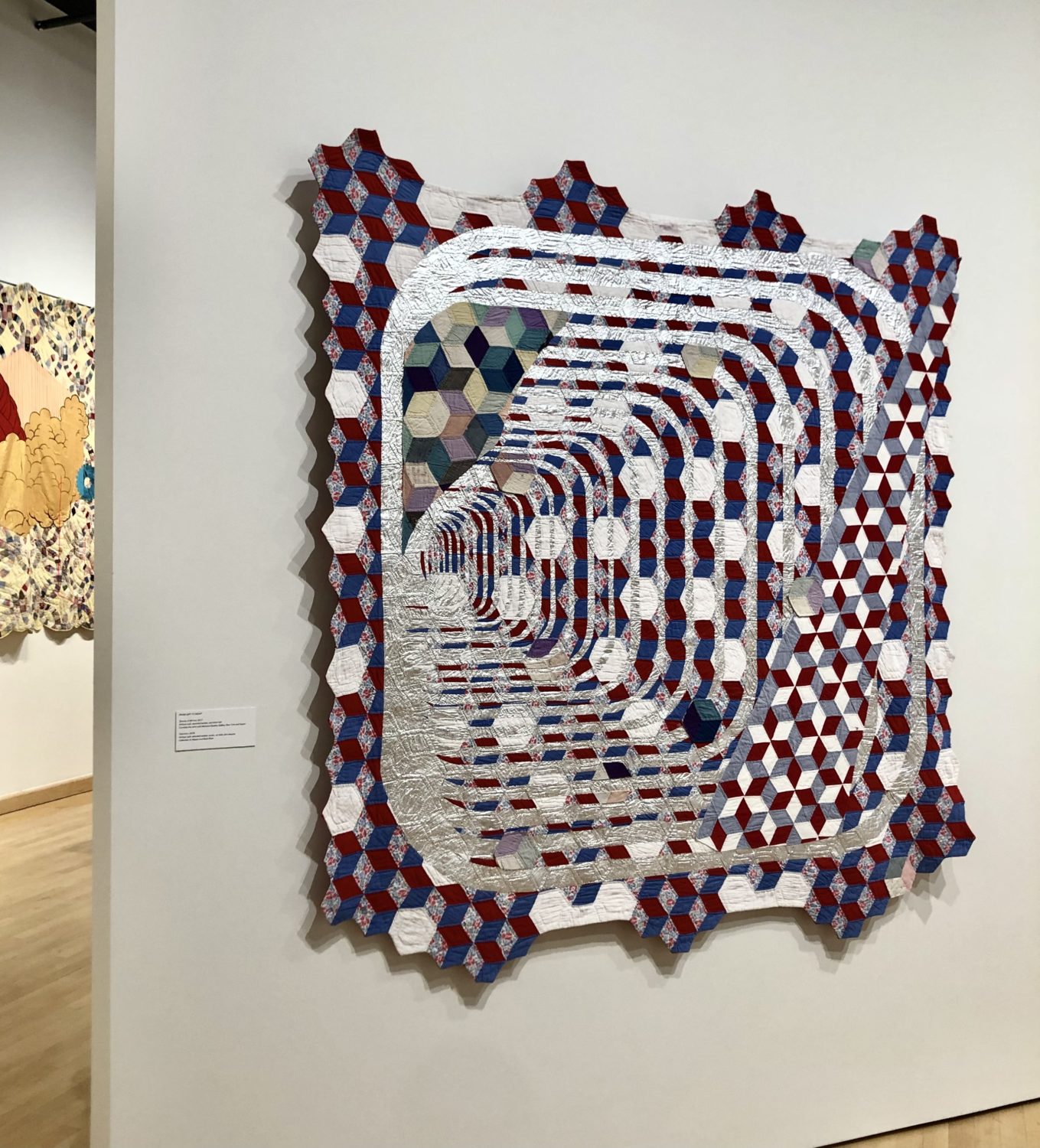
Sanford Biggers, Codeswitch, Installation view at CAAM (Photo Shana Nys Dambrot)
The resulting pieces are eclectic in style, emotion, texture and palette. They do all the things that painting, sculpture and collage do — creating layers, patterns, key images and mysterious motifs, color stories, angular spaces, delightful trompe l’oeil and illuminated memories. But they further possess an elusive yet inescapable aura, the energy traces of the hands that made the quilts more than a century ago and all the bodies they have cradled since, not to mention whatever private personal recollection is sparked in each new viewer. Both centuries old and tactilely functional. As both family heirlooms and historical objects, it’s this foundation expressing the past as being very much also the present on which Biggers constructs these embodied works — what he calls “transgenerational palimpsests.”
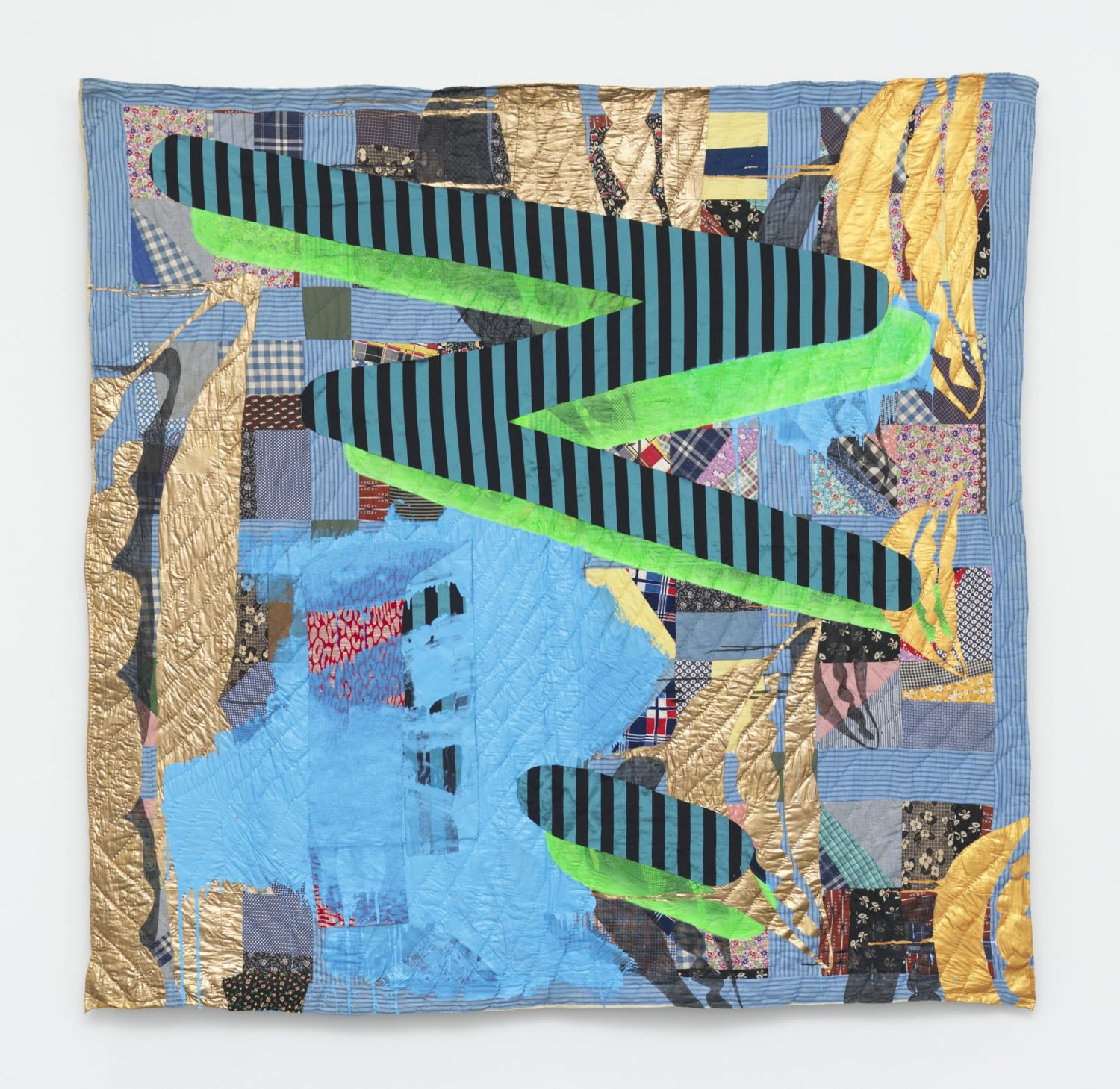
Sanford Biggers, Chorus for Paul Mooney, 2017. Antique quilt, assorted textiles, acrylic, spray paint, 76 x 76 in. © Sanford Biggers and Marianne Boesky Gallery, New York and Aspen
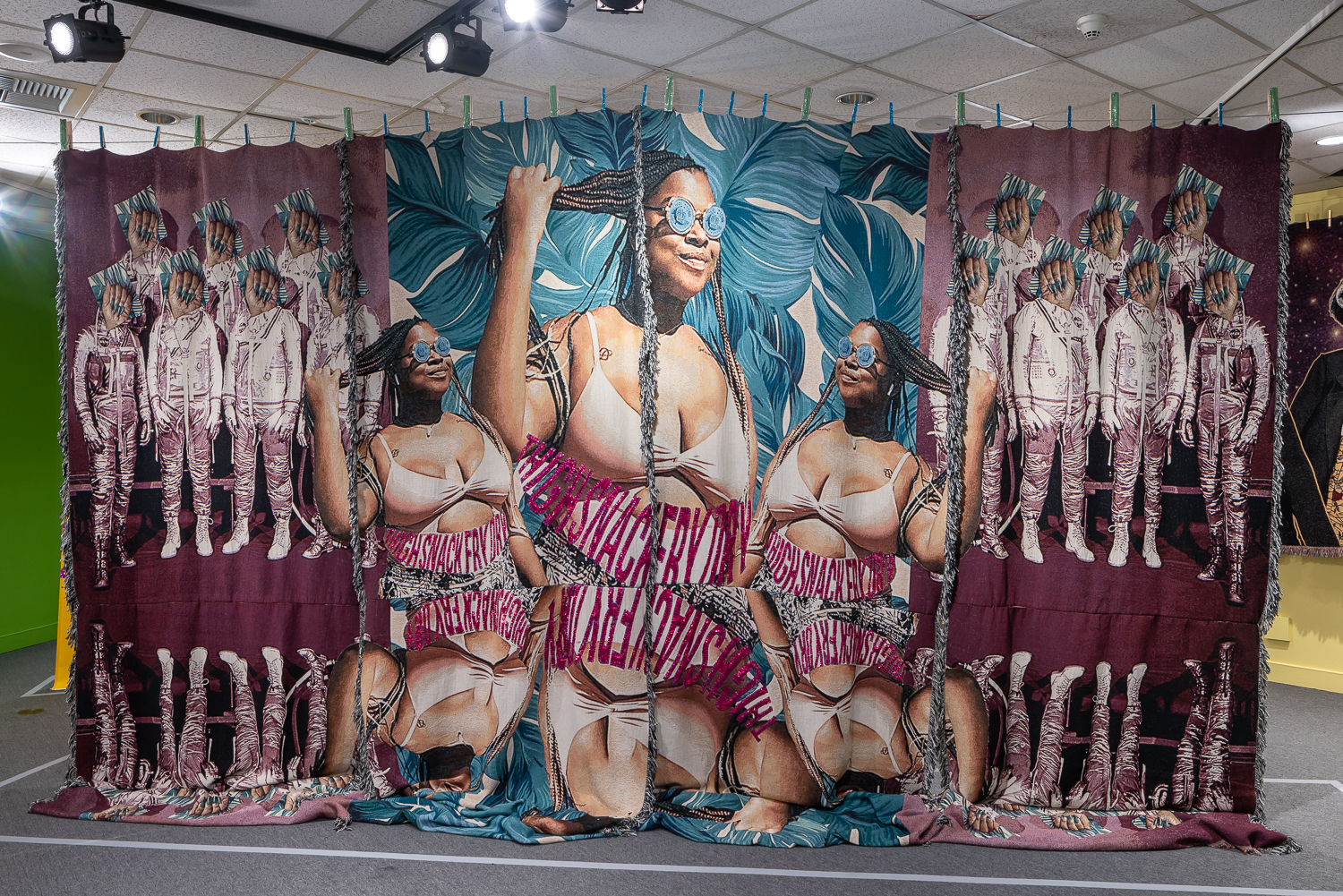
April Bey: Atlantica, The Gilded Region, installation view at CAAM (Photo by Elon Schoenholz)
Across the museum, Bey treats an enhanced version the future as an alternative present, an Afrofuturist fantasy of a planet with a queer, feminist, digital and delectable civilization. Atlantica — the home planet of the artist, who has been sent to Earth on a reconnaissance mission. Her installation includes plants, photography, audio and video, but the centerpieces are a series of monumental textiles, woven tapestries whose grand scale and material physicality call to mind the decor of castles and their great halls. In fact the characters and scenes depicted in these hyperchromatic, digital-culture pieces of Atlantican mythology and earthbound shenanigans do have a rather regal presence. They beckon forth, perform for, dismiss and tower over the viewer. They radiate superlative confidence, self-possession and a kind of beauty that would once have seemed exotic to American eyes.
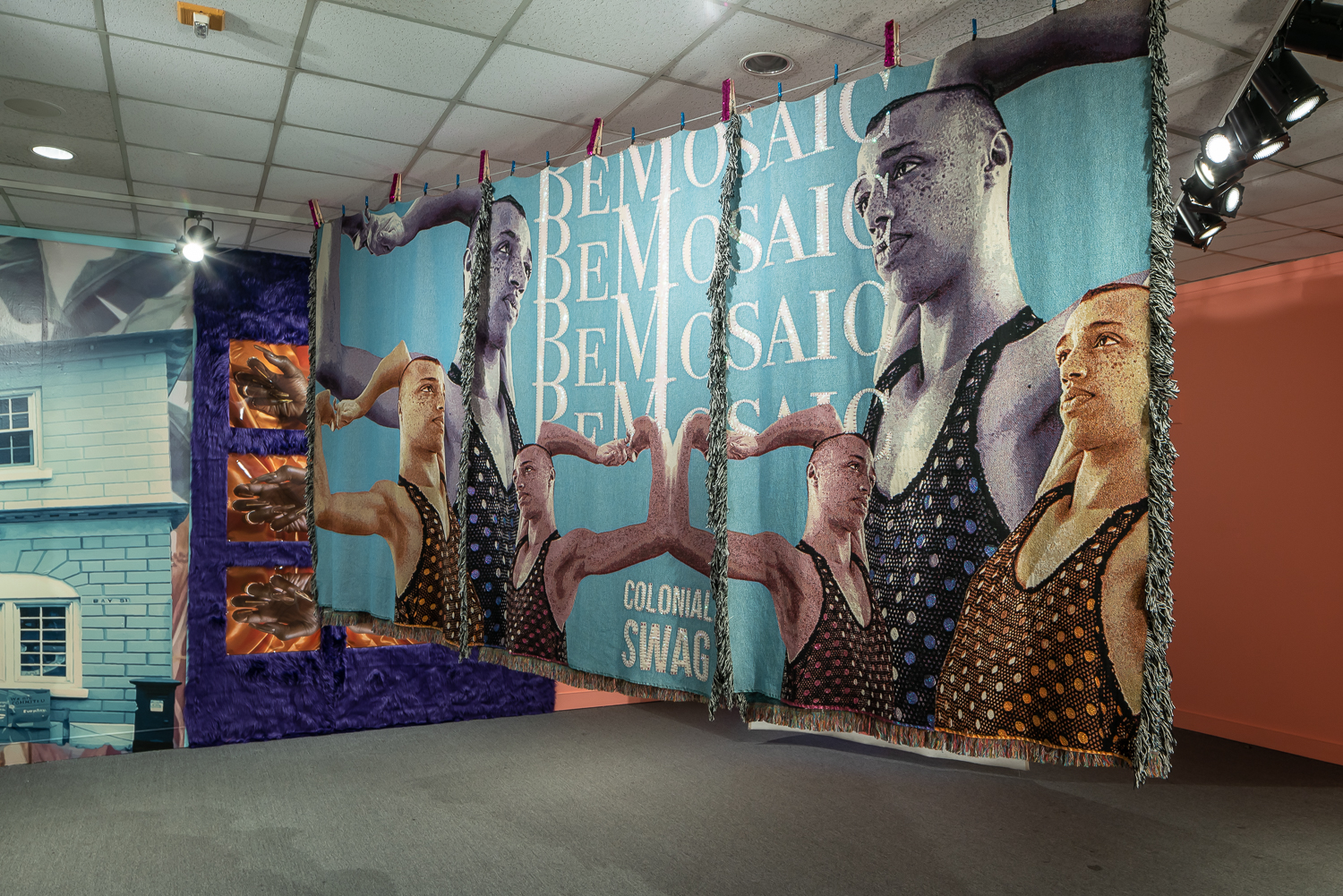
April Bey: Atlantica, The Gilded Region, installation view at CAAM (Photo by Elon Schoenholz)
On the planet Atlantica, a culture of excellence, comfort, creativity, joy, self-care, ecology, equality, queerness and abundance prevails. The attraction of this story has its roots in the fantastical storytelling of Bey’s Bahamian childhood, but also a darker dimension of escapism from the traumatic situation experienced by Black people in America. In that way, it’s a major work of Afrofuturism, an update to that tradition which takes on not only the broader geopolitical considerations, but the culture wars and pragmatic struggles being waged closer to home, in individual lives, as the promise of a peaceful world continues to be challenged by the violence of the one we currently inhabit.
Both exhibitions are on view at CAAM in Exposition Park through January 2022; admission is always free; caamuseum.org.
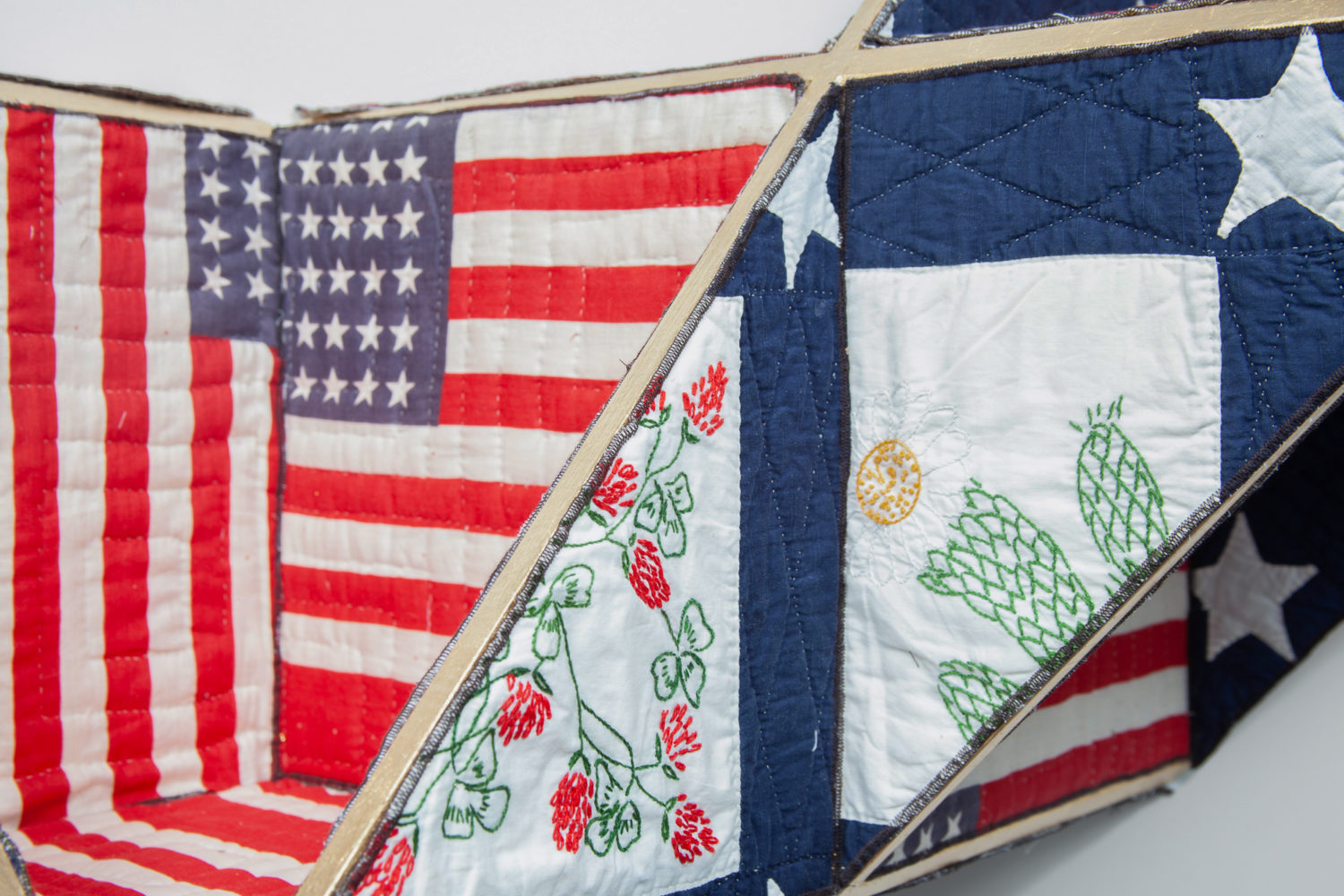
Sanford Biggers, Reconstruction , 2019 (detail). Antique quilt, birch plywood, gold leaf, 38 x 72 x 19 in. © Sanford Biggers and Monique Meloche Gallery, Chicago. (Photo: RCH Photography)
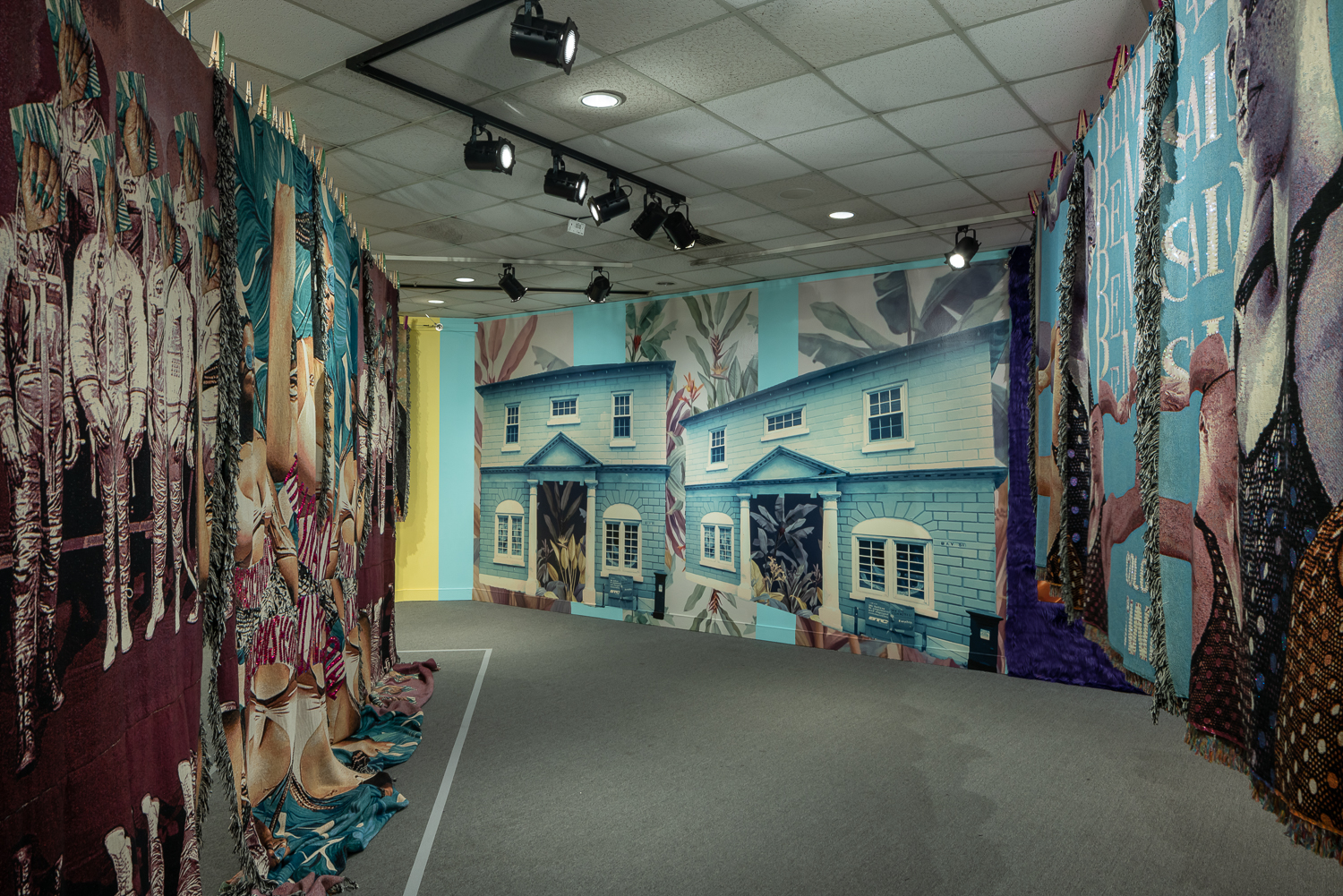
April Bey: Atlantica, The Gilded Region, installation view at CAAM (Photo by Elon Schoenholz)
Advertising disclosure: We may receive compensation for some of the links in our stories. Thank you for supporting Irvine Weekly and our advertisers.

